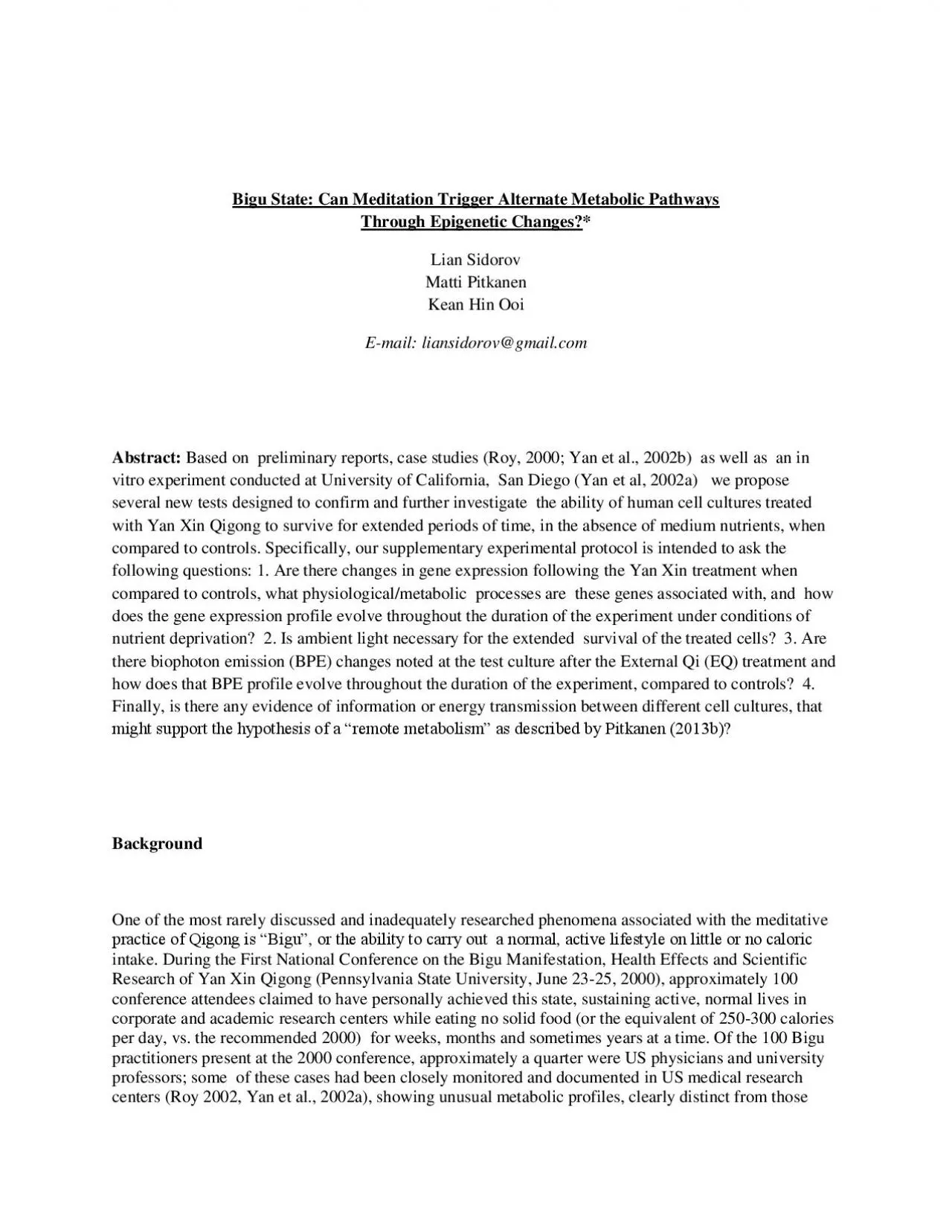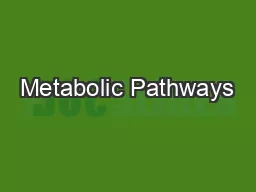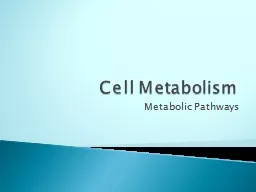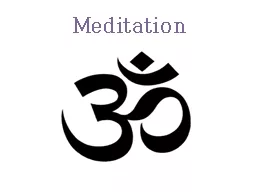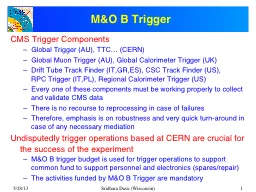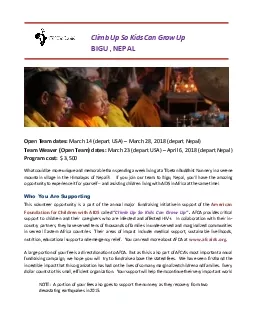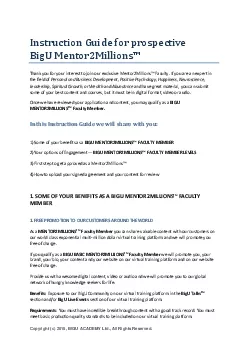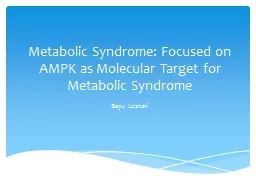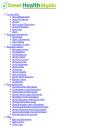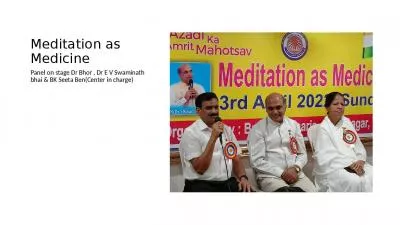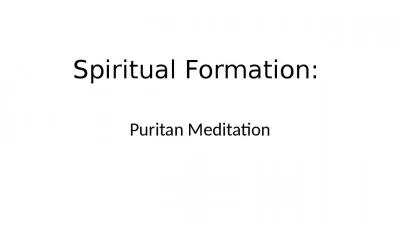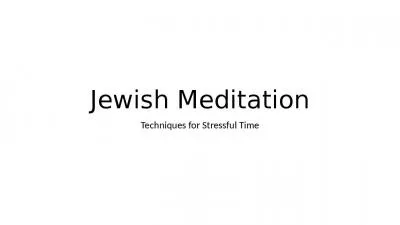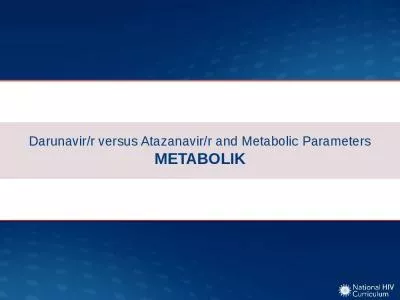PDF-Bigu State Can Meditation Trigger Alternate Metabolic Pathways
Author : lauren | Published Date : 2021-06-09
Through Epigenetic Changes Lian Sidorov Matti Pitkanen Kean Hin Ooi E mail liansidorovgmailcom Abstract Based on preliminary reports case studies Roy 2000 Yan
Presentation Embed Code
Download Presentation
Download Presentation The PPT/PDF document "Bigu State Can Meditation Trigger Altern..." is the property of its rightful owner. Permission is granted to download and print the materials on this website for personal, non-commercial use only, and to display it on your personal computer provided you do not modify the materials and that you retain all copyright notices contained in the materials. By downloading content from our website, you accept the terms of this agreement.
Bigu State Can Meditation Trigger Alternate Metabolic Pathways: Transcript
Download Rules Of Document
"Bigu State Can Meditation Trigger Alternate Metabolic Pathways"The content belongs to its owner. You may download and print it for personal use, without modification, and keep all copyright notices. By downloading, you agree to these terms.
Related Documents

